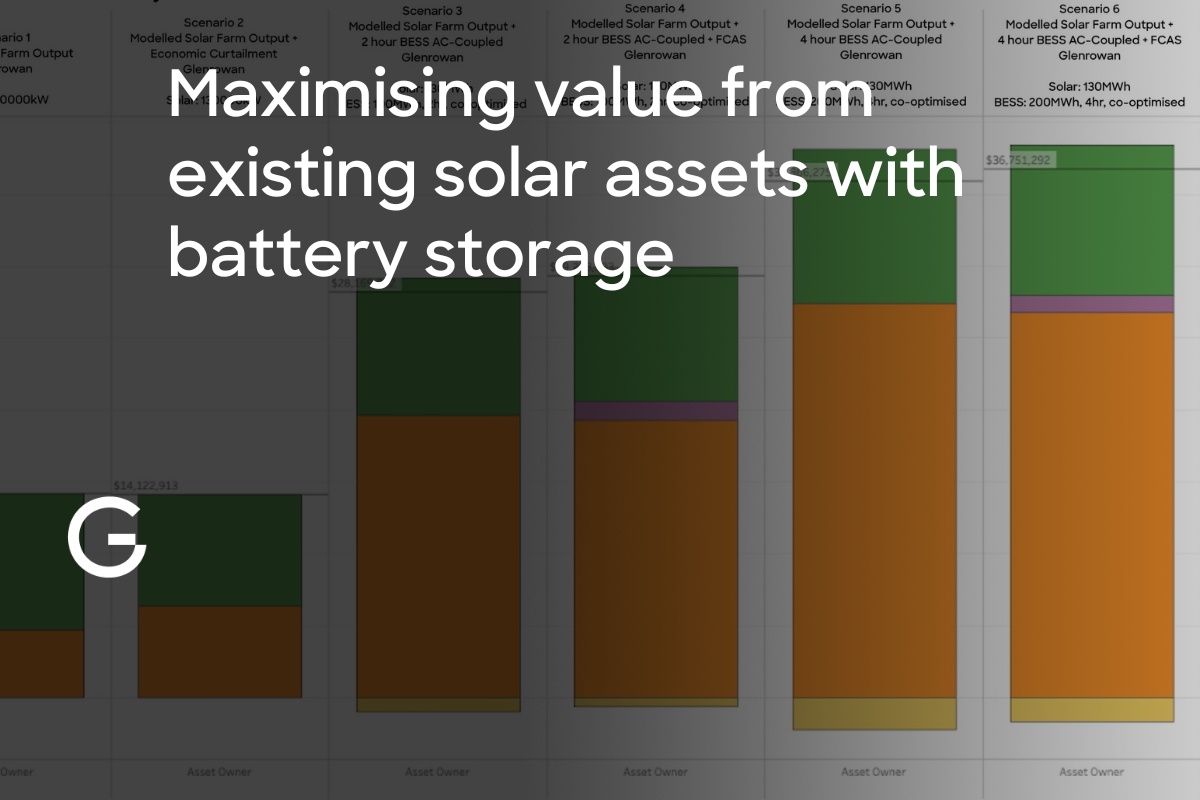TMY Overestimates Solar Revenue In High VRE Markets

The growing penetration of variable renewable energy (VRE), particularly solar power, is reshaping electricity markets and challenging traditional modelling approaches.
Solar energy production is inherently tied to the availability of sunlight, which at the risk of stating the obvious peaks during the day. This diurnal pattern increasingly coincides with periods of lower, or even negative, wholesale electricity prices, driven by oversupply in the market relative to demand.
Traditional solar modelling techniques, such as those using Typical Meteorological Year (TMY) data, fail to capture this dynamic relationship between high solar output and market pricing trends. As a result, models that rely solely on TMY irradiance data are at risk of overestimating the revenue potential for solar projects.
To demonstrate this phenomenon we've run a Gridcog solar model using both TMY and actual historical data for 2023 for Victoria in the NEM. More on that in a moment, but first a reminder of what TMY actually is.
TMY-based models are designed to provide a long-term average representation of solar generation under “typical” conditions. There are a few different ways that folks come up with a TMYs for any given location but they've been the industry standard for solar yield modelling since forever. Crucially they're based purely on long term weather data.
So what's changed?
In short, we now have a heap more solar in our energy systems.
Whilst the TMY approach works well for estimating energy yields in the absence of market dynamics, it ignores important correlations between solar generation and market price signals. In markets like Australia's NEM negative prices driven by solar generation are incredibly common. For example in 2023 South Australia experience around 2,300 hours of negative prices across the year. That's over 25% of all price intervals! Similar dynamics are now clearly visible in a number of European markets.
This is a trend that TMY-based models cannot account for and the disconnect is making the traditional approach less relevant for financial forecasting.
A real world example
This chart illustrates the issue by comparing solar generation profiles from TMY data with those derived from actual historical irradiance. We're focussing on September 2023 in the NEM, specifically in Victoria. September 2023 was noteworthy for being especially sunny, making it great for illustrating this dynamic.
The data set is filtered to just the days in September when the average wholesale price for the day was negative. Again that's just to help isolate the particular topic we're talking about. Not surprisingly you can see in the wholesale price chart at the bottom that all those negative prices occurred during daylight hours. That is not a coincidence!

The solar yield modelled using TMY irradiance is shown at the top and the solar yield modelled using actual historical irradiance for that time period is shown below with the average across all those days in yellow and the individual days in grey.
What's clear is that on those days with negative market prices our "actual" solar system (driven by historical irradiance) generated much more energy than our system driven by TMY data. Of course that makes sense - the prices were only negative on those days because it was very sunny.
So why does this matter?
Well, it's all about solar capture rates. That's the volume-weighted average price earned (or paid!) by the owner of the solar asset for the energy they generated. You can see that our model using historical irradiance loses a fair bit more money generating into these negative prices. This suggests that TMY models underestimate the adverse impact of coincident high solar output and low prices, leading to overly optimistic revenue projections. That's important if you're a solar investment, particularly so given prevalence of daytime negative pricing is only likely to increase with the solar build out.
The wrap
As the share of solar and other VREs continues to grow, historical irradiance data or other market-integrated approaches are becoming critical for accurate revenue forecasting. Unlike TMY, these approaches reflect the real-world relationship between local weather, generation, and pricing dynamics.
By integrating actual historical data with wholesale price data, project developers, operators, and investors can better understand the risks and opportunities associated with solar investments in evolving energy markets. This shift in modelling focus is important for maintaining the financial viability of solar projects in the face of increasing market complexity.



.jpg)

.jpg)

